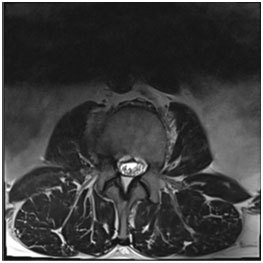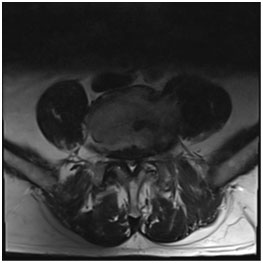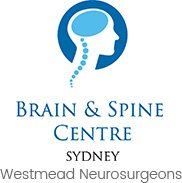Lumbar Spinal Stenosis
Lumbar spinal stenosis refers to the narrowing of the spinal canal and /or the vertebral foramina in the lower back. This causes compression of the spinal cord (central canal stenosis) and of the spinal nerves (foraminal stenosis) passing through the vertebral foramina.


Lumbar spinal stenosis usually occurs due to osteoarthritis and the degenerative changes in the spine as a part of the natural ageing process. It is more common in adults after the age of 50 years. However, in some patients, a narrower spinal canal may be present at birth (Congenital spinal stenosis). In others, it can result from the degenerative changes of a previous lower back injury.
Degenerative changes in the spine result in:
- Decreased height of disc space
- Herniated or bulging disc
- Bony outgrowth (osteophytes)
- Overgrowth (hypertrophy) of facet joints
- Thickening of ligaments around the spine (especially spinal ligament, ligamentum flavum)
Symptoms
The common symptoms of lumbar stenosis include:
- Pain, numbness or tingling sensation in buttocks or legs
- Weakness in the legs
- Difficulty in movement
- Sitting or leaning forward reduces pain
- Symptoms usually worsens on exertion/exercise ( Neurogenic Claudication)
It is a progressive condition and in severe cases it may cause bladder and bowel dysfunction or significant weakness of the lower limbs (paraparesis).
Diagnosis
Detailed medical history coupled with physical and neurological examination is essential for an accurate diagnosis. Neurological examination involves the evaluation of reflexes and muscle weakness and helps in identification of any injury. Your doctor may also order an X-ray, MRI or CT for the confirmation of the diagnosis.
Treatment
Non-surgical treatment
Non-surgical treatment is preferred approach and includes pain medication such as non-steroidal anti-inflammatory drugs, muscle relaxants and spinal injections. Physical therapy, non-surgical spinal decompression or acupuncture may be helpful in some cases. The use of a walker can improve the walking tolerance.
Surgery
Surgery is considered in patients with intolerable pain and failed non-surgical treatments, spinal instability and neurologic dysfunction. The two commonly performed surgical procedures for treatment of lumbar spinal stenosis are laminectomy and spinal fusion.
Laminectomy involves increasing the space around the spinal cord and/or nerve by removing bone, bone spurs and ligaments compressing them. It is done either by an open surgery or a minimally invasive approach.
Laminectomy with Spinal Fusion may be recommended if patients have spinal instability due to arthritis and a significant component of back pain associated with leg pain. Spinal fusion involves permanent fusion of two vertebrae with rods and screws to eliminate the movement between them.
Most patients undergoing surgery find significant reduction in leg pain and improved exercise tolerance post-surgery.




